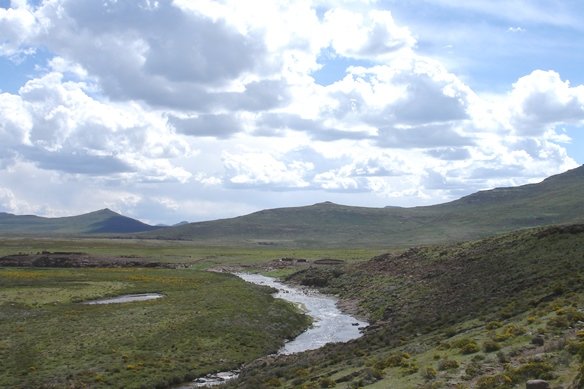A river is a city

Author: Ivan Lätti
Photographer: Judd Kirkel Welwitch
Quiet is good when aiming beyond the sentimental, maudlin or romantic in contemplating a view like this. The significance of a river in ecological impact over time is so far beyond what one human mind can appreciate in a day, a year or a lifetime that silence is most appropriate.
The dynamic relationship between water and untold life forms holds varied stories of adaptation, mutual benefit, harmony, rivalry and sudden death. All concerned in living together here learn the rhythm of riparian life as it affects them particularly, according to their capacity for learning. Or not. The vicissitudes of life near a superior force of wet (and dry) presents challenges, often accompanied by little thinking time. Thinking is not the strong suit of many residents in a natural ecology. Being eaten is but one way of being consumed here. Staying unobtrusive to invisible at opportune times in the green is good practice. There are warning systems but everyone here does his or her own policing... and escaping.
The seemingly endless river in time and space teems with insects, mammals, birds and other inhabitant life. All of this changes along its continual decrease in elevation and increase in flow, gradually or abruptly, all the way to the sea. Scenery of riparian flora on the green banks, made up of reeds, rushes, grasses, shrubs and many unusual extras, offer unexpected sights of lifestyles along the river length. As one expects in all densely populated living areas. Rivers provide numerous benefits only discovered when living here, like their contribution to temperature control. Granted, rivers are at times a bit much to swallow.
Many plants rely on the flowing water to disperse their seeds, for germinating who knows where. Rerootable plant parts are from time to time carried downstream like city vagrants. It takes all types! In this way riverbanks change the look and feel of their leafy cover over time, and all the time. What’s delivered from upstream, settles downstream or may bother the sea, so don’t litter! Cities, like rivers, die from it!
Nooks untold in the shadows serve as housing for raising families of organisms big and small. Most of them don’t share small talk, similar to many town folk these days. Or maybe always. Instinct and the capacity for spotting danger are constant companions for making it here. Isn't this true everywhere in nature? That is, where anything lives?
Dense population causes a busy ecology. Numerous nifty cohabitation solutions benefit unlike partners in crime, which is but a form of survival innocence in nature. Juxtaposed random parties all capitalise on the contingencies of the moment.
The interpretation of arm's length decreases continually as long as the populations grow, and vice versa. Frogs, for instance, make good neighbours, depending on what you are and how much personal space you need. Incoming river residents check out prospective living quarters, the company one will keep and food supplies, before settling in. (The last two partly overlap.) If one can’t or won’t eat a neighbour, it might still reciprocate, so beware! Still, all sorts of beasties raise offspring in unlikely niches among the bushes nearer or further from the water. River real estate worth fluctuates depending on the tastes in the mix of resident species. All the inhabitants mutually and collectively check and adjust each other’s population numbers. (We eat each other, of course, most politely!) Shopping is seasonal, aligned with conditions and who is available. River supermarkets are rare, delis abound.
Flood is upheaval, intermittently wiping out individuals of all shapes and sizes. A bit like earthquakes in Japan. Life is about all the extant species forming unique niche communities, then carrying on regardless according to their collective, specific habits. People understand how in human cities habits are curbed by resources and natural conditions. It's the same all over! All do as they are allowed, each kind uniquely armed with functional defence mechanisms of their species. What’s good for the grass isn’t good for the reed but what about the herbivore? Municipal bylaws are unwritten here, as forever. But things may have developed differently: "Thou mayest verily consume thy neighbour, should hunger so compel thee!"
Floods replenish nutrients. All survivors adjust and capitalise! Seasonal dry spells test comfort and resilience. Drought tests harder. The way rivers live is increasingly better understood by human minds. Human hearts also need to grasp more of this for the magnificent rivers of the earth to retain their character.

